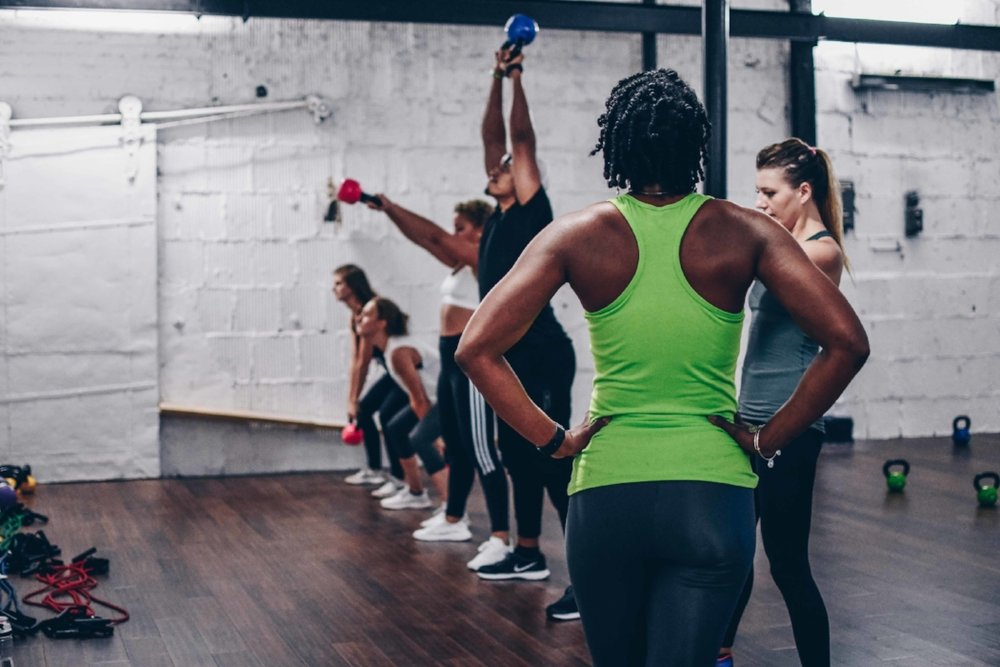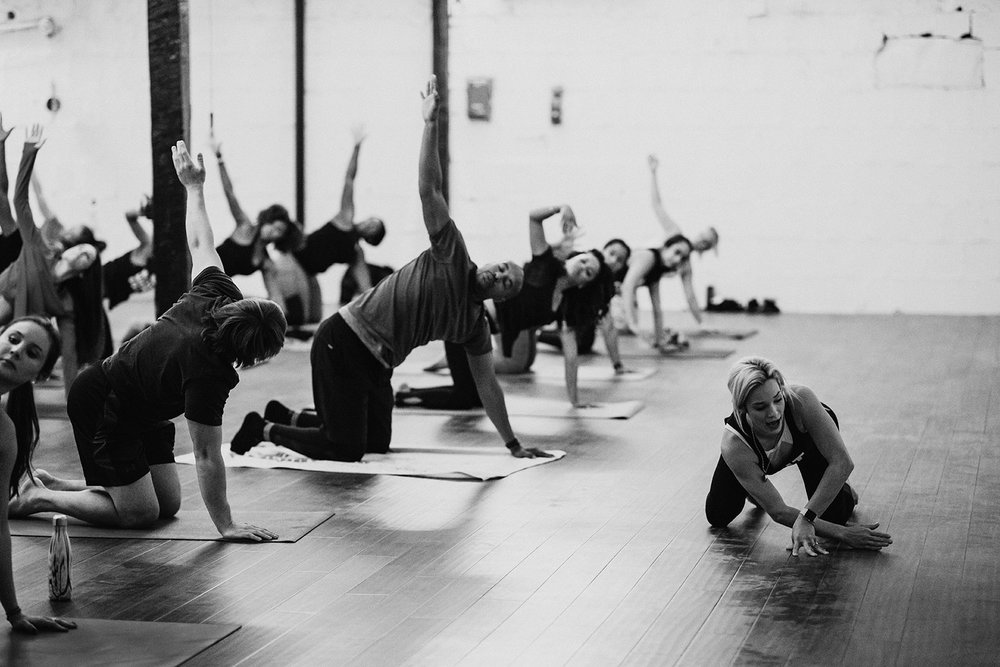4 Essential Rules for Toning and Sculpting your Arms
Along with a shapely posterior, toned and sculpted arms are a highly sought after fitness goal. You’ve likely been attempting to get your arms to Michelle Obama’s level, but haven’t had much success. If you’re struggling to tone your arms, doing heavy, compound, upper body exercises such as rows and presses will help fix this issue quickly.

Because your arms are always going to assist with any upper body exercise, performing compound ones that can be progressively overloaded with heavier weight will ensure arm development along with the rest of your upper body. Try this fix out first and see what happens…
Still struggling to develop your arms? Then keep reading.
If compound exercises alone are not developing your arms, you will need to incorporate direct arm training into your fitness routine. However, many people perform direct arm training and exercises improperly resulting in injury or mediocre results. In order to get the toned, sculpted arms you’ve sought, there are four rules you should follow when training them:
- Train your Biceps and Triceps together
- Do your isolation exercises first followed by your compound exercises
- Squeeze the muscle each time you complete one rep
- Do not take rest breaks between exercises
Rule #1: Train Your Biceps and Triceps Together
When training arms, you should always superset a Bicep exercise with a Tricep exercise. Training your Biceps and Triceps together will work the entire arm during your training session leading to faster results. It will also fill them with blood and lubricate your joints lessening the stress on your elbows and minimize the injury risk to them.
Additionally, alternating a Bicep exercise with a Tricep exercise will allow one muscle group to recover while the other one is working. This will allow you to train hard while minimizing fatigue as doing two Bicep or Tricep exercises one after the other will cause exhaustion and limit your ability to perform the sets without having to take extra breaks or lower the weight.
Rule #2: Do Your Isolation Exercises Before Your Compound Exercises
Many fitness professionals recommend that you perform compound exercises first in a workout before performing isolation exercises. This recommendation does not apply to arm training. Because it’s easier to stress and injure your elbows when doing arm exercises, you should aim to get as much blood into your arms as possible by performing isolation exercises with lighter weights before doing compound exercises.
Not only will this help shuttle nutrients to your arms after a workout speeding up recovery, it will also help warm them up as well as lubricate your elbow joints so that they do not have as much stress placed on them. Training your Biceps before your Triceps will also help lessen potential elbow strain.
When training Biceps, start with the brachialis muscle as this is the primary muscle responsible for elbow flexion. Not only will training it first help warm up your elbow joint more effectively, it will also help push the Bicep and Tricep apart resulting in a more defined looking arm. The best way to train the brachialis is with exercises that use a neutral grip, where your palms are facing each other. Example exercises to use include Dumbbell or Kettlebell Hammer Curls, Dumbbell or Kettlebell Reverse Grip Curls, Dumbbell or Kettlebell Zottman Curls, and Cable Rope Hammer Curls.
Next, move on to the biceps brachii. This is the main Bicep muscle located on the front of the arm, and the one that is most prominently visible. The reason you should train this muscle second is because it’s susceptible to strains and tears when loaded too heavily. These are less likely to happen after training the brachialis, because the muscle will be pumped with blood and warmed up thoroughly. Example exercises include variations of Dumbbell or Kettlebell Bicep Curls, and Dumbbell or Kettlebell Preacher Curls.

Finally, you should finish with a compound Bicep exercise. Again, because you can load the Biceps with heavier weights on compound exercises, you should perform them last as your joints will be lubricated and there will be plenty of blood in the muscle to minimize your injury risk. You should go heavier on these exercises to focus on strength development, but not so heavy that your form is compromised. Example compound exercises include Barbell Bicep Curls, Heavy Dumbbell Bicep Curls, TRX, Ring or Barbell Inverted Rows, and Chin-ups.
When training Triceps, begin with pushdown exercise variations. Similar to brachialis exercises for Biceps, pushdown exercises will help move blood into your triceps limiting elbow strain. However, avoid Bench Dips for your pushdown exercise. These place your shoulder joint, specifically the acromion, in a stressed position resulting in shoulder damage over time due to the fact that it can’t bear your entire body weight safely. Safer pushdown exercise examples include Cable Rope Tricep Pushdowns, Cable Bar Tricep Pushdowns, Single Arm Cable Tricep Pushdowns, Tricep Kickbacks, and Machine Tricep Pushdowns.
Afterward, perform elbow flexion and extension exercises for your Triceps. These will be safe to do after performing pushdown exercises due to elbow lubrication and blood flow to the Tricep. Elbow flexion and extension exercises will help emphasize the stretch on the Tricep which will really help develop the muscle. Example exercises include Barbell or Dumbbell Tricep Extensions, Barbell or Dumbbell Lying Tricep Extensions, and Barbell or Dumbbell Overhead Tricep Extensions. Finally, just like with Biceps, perform your compound Tricep exercises last and with heavier weights. Example exercises include Barbell Close Grip Bench Presses, Barbell JM Presses, and Weighted Diamond Push-ups.
Rule #3: Squeeze the Muscle After Completing Each Rep
In order for your arms to fully reap the benefits of a workout, you must consciously squeeze the muscle during each rep of the exercise. This will both help get more blood into the muscle and increase your body’s mind-muscle connection allowing you to recruit more muscle fibers and fire them more effectively leading to increased performance and development.
When performing a Bicep exercise, squeeze the muscle when the distance between your forearm and Bicep is the shortest. When performing a Tricep exercise, squeeze the muscle near the point where you’re about to lock your elbows out. Doing this will help maximize your potential growth and get you closer to your goal of sculpted arms.
Rule #4: Eliminate Your Rest Periods
As mentioned above, developing your arms not only requires you to progressively overload your exercises over time, but to also accumulate as much blood in them as possible. This will both shuttle nutrients to your arms after your workout and limit your injury risk. After exercise selection, the best way to ensure your arms receive as much blood as possible is to completely eliminate your rest periods. Having no rest periods will do an effective job of keeping blood in the muscle as well as increasing muscular endurance.
Normally, not resting between sets can impact recovery and lead to exhaustion resulting in decreased performance. However, the weights you use to train arms are likely going to be light enough to where you can handle it. Still, because the weights you use on compound arm exercises will be heavier, you may need to rest during those sets. If that’s the case, 60 second rest periods should be adequate.
Putting It All Together
Now that you have an idea of how to do a safe and effective direct arm workout, it’s time to put the above knowledge to use. Here are two sample workouts using the rules:
Direct Arm Workout #1
1a) Dumbbell Hammer Bicep Curl: 3 Sets of 12-15 Reps. No Rest
1b) Cable Rope Tricep Pushdown: 3 Sets of 12-15 Reps. No Rest
2a) Incline Chest Supported Dumbbell Bicep Curl: 3 Sets of 12-15 Reps. No Rest
2b) Seated Dumbbell Overhead Tricep Extension: 3 Sets of 12-15 Reps. No Rest
3a) Barbell Bicep Curl: 3 Sets of 8-10 Reps. No Rest
3b) Weighted Diamond Push-up: 3 Sets of 8-10 Reps. 60 Seconds Rest
Direct Arm Workout #2
1a) Dumbbell Reverse Grip Bicep Curl: 3 Sets of 12-15 Reps. No Rest
1b) Machine Tricep Pushdown: 3 Sets of 12-15 Reps. No Rest
2a) Dumbbell Preacher Curl: 3 Sets of 12-15 Reps Each Arm. No Rest
2b) Barbell Lying Tricep Extension: 3 Sets of 12-15 Reps. No Rest
3a) Dumbbell Bicep Curl (Heavy): 3 Sets of 8-10 Reps. No Rest
3b) Barbell Close Grip Bench Press: 3 Sets of 8-10 Reps. 60 Seconds Rest
What if you would rather train your arms after an upper body workout instead of devoting a day just for arms? In this case, you could potentially jump right into doing any arm exercises you want as your arms will already have a significant amount of blood in them from the exercises you already did. However, to minimize fatigue and maximize performance, pair a lighter bicep exercise with a heavier tricep exercise one day and and heavier bicep exercise and lighter tricep exercise another day.
Sample Upper Body Workout
1a) Chest Supported Dumbbell Row: 3 Sets of 8-10 Reps. No Rest
1b) Dumbbell Bench Press: 3 Sets of 8-10 Reps. 60 Seconds Rest
2a) Incline Dumbbell Back Fly: 3 Sets of 15-20 Reps. No Rest
2b) Dumbbell Lateral Raise: 3 Sets of 12-15 Reps. 60 Seconds Rest
3a) Dumbbell Hammer Bicep Curl: 3 Sets of 12-15 Reps or Barbell Bicep Curl: 3 Sets of
8-10 Reps. No Rest
3b) Barbell Close Grip Bench Press: 3 Sets of 8-10 Reps or Cable Rope Tricep Pushdown:
3 Sets of 12-15 Reps. 60 Seconds Rest
Now you should have the tools to successfully tone and sculpt your arms while minimizing the risk of elbow strain and muscle injuries. Give the above tips a try during your next arm or upper body workout and see how they work for you.
ABOUT THE AUTHOR
Nick Tigges is a personal trainer and online fitness coach based in Atlanta. He specializes in smart, efficient training plans that will get you stronger and more conditioned while minimizing injury risk. You can message him at nick@tiggesfitness.com.
Become an Insider
we keep up with the latest fitness & wellness events, new openings, and news around atlanta so you don't have to